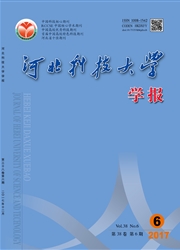

 中文摘要:
中文摘要:
滑动轴承转子系统是一类多自由度非线性非自治动力系统,广泛应用于工业实际。生产实践中,设计观念和维修体制的变革提出了稳定性量化分析的要求。本文首先描述了一种基于轨线保稳降维方法的转子轴承系统的稳定性量化分析,即首先利用数值积分对高维非线性转子系统进行解耦,将R^n轨线映射为一系列R^1映像轨线,并将各自由度的运动方程中除该自由度外的所有状态变量用积分结果代换,得到n个互相解耦、含有多个对变参数的单自由度方程。其次再在R^1观察空间中定义轨线的稳定裕度,根据轨线稳定裕度利用灵敏度技术预测动力系统的分岔点。最后,对一个滑动轴承支承的三跨转子模型实验台建立动力学方程,并利用上述方法预测该转子系统发生分岔的参数值和分岔特性。预测得到的分岔参数值与采用直接数值积分法在Poincase截面得到的分岔参数值基本一致,且2种方法在分岔点处判断得到的分岔性质完全相同。由此可见,该方法不仅与直接数值积分方法得到的结果一致,而且由于该方法利用了灵敏度技术因而其分岔点的搜索过程比直接数值积分法快得多。
 英文摘要:
英文摘要:
Rotor-bearings systems are nonlinear dynamic systems of multi-degree freedom. Modern concepts on design and ma intenance call for quantitative stability analysis. The idea of a quantitative methodology for the stability analysis of nonlinear rotor systems using trajectory based stability-preserving dimensional-reduction is described in this paper. At first, an-dimensional nonlinear non-autonomous rotor system is decoupled into n subsystems after numerical integration. Each of them has only one degree of freedom and contains time-varying parameters to represent all other state variables. In this way, n-dimensional trajectory is mapped into a set of one-dimensional trajectories. Then the corresponding stability margins of trajectory are evaluated quantitatively in one-dimensional observation space. By means of the margin and its sensitivity analysis, the critical parameters of bifurcation in nonlinear rotor systems are determined. The method is applied in a three spans rotor system supported by lubricated bearings to predict the bifurcational parametic value and corresponding bifurcatinal characteristic. The study shows that the method mentioned in this paper obtains the same results with direct numerical integration; moreover it is faster than numerical calculation in a trial-and-error way in determining the critical parameter of bifurcation.
 同期刊论文项目
同期刊论文项目
 同项目期刊论文
同项目期刊论文
 期刊信息
期刊信息
